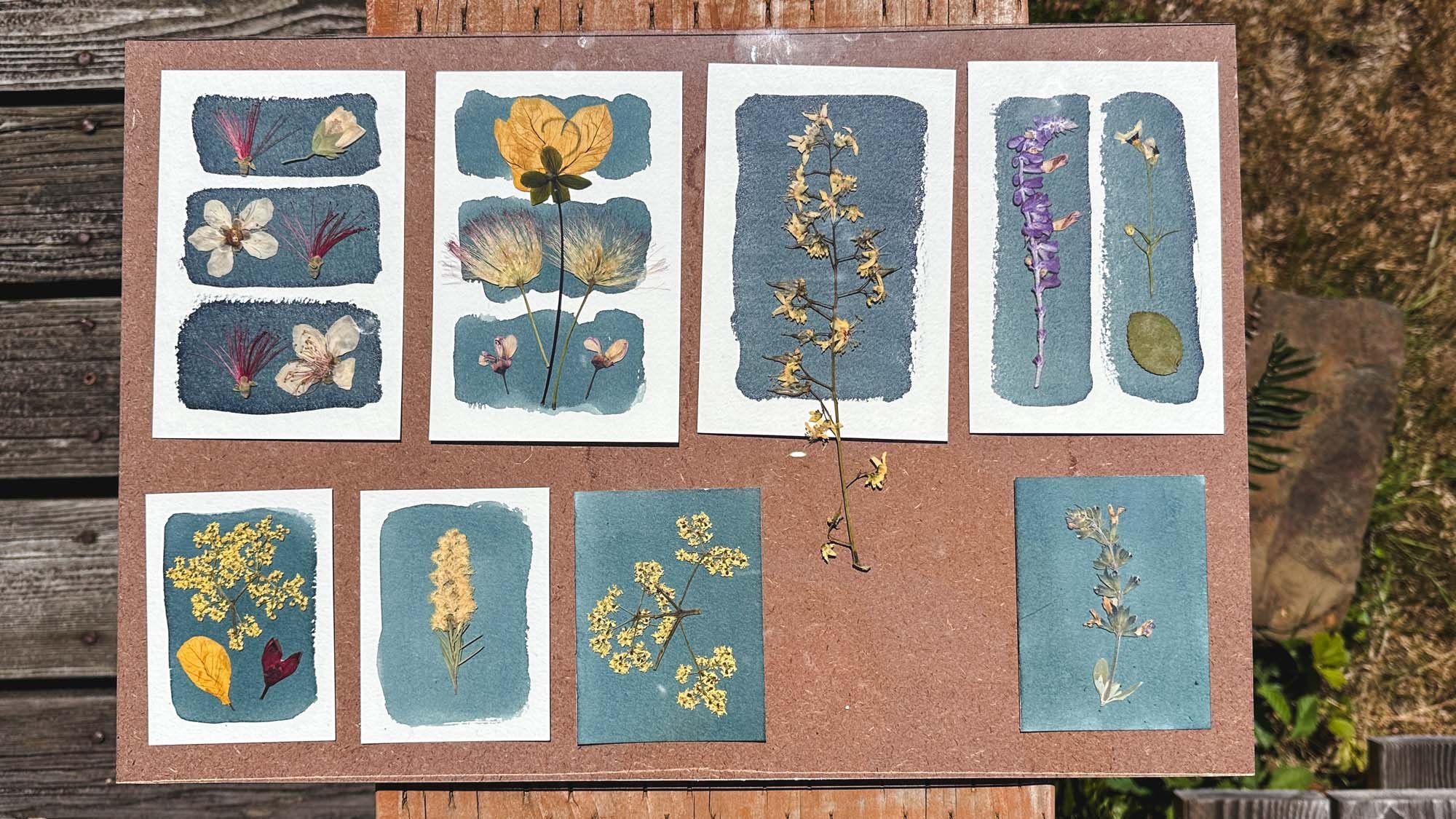How to Make Cyanotypes
If you’ve come here, I am guessing you have an interest in how to make cyanotypes or sun prints. I love the entire process of making cyanotypes. Some creative processes have steps you don’t like or are hard. But this is one thing, that I enjoy the whole way through. I make botanical cyanotypes. And collecting the plants, pressing them, and seeing how the sun interprets their shapes is pretty magical.
There are a lot of resources on the internet about how to make these incredible blue prints. With that, I don’t necessarily want to add a whole lot to that type of instruction. I learned how to do this from researching on the internet and experimenting on my own. But what I would like to do is broadly walk you through how I make my prints and some things that work really well for me in that process.
Materials
Obviously, we’ll start with the tools we need. We’ll need some cyanotype chemicals, paper, and something to print with such as plants. I like to use Jacquard brand for the chemicals. They come in powder form. You add water to the bottle and shake. Then mixing equal parts of each, we have our solution.
Design
Next up, we’ll paint the mixture onto the paper and add our plants. Laying them out in interesting designs is lots of fun. I originally began with painting either one big area or the entire page. Recently, I’ve been switching it up and doing several panels across the page and getting glimpses of large plants across each of just small ones within the panel.
Time for the sun
Now the prints need to lay out in the sun. I find that in the Oregon summer, 5 minutes is a great amount of time to get the kinds of prints I like. Some papers or plants will require longer.
Voila!
And with a little water rinsing and some time to dry, you’ll have some fantastic cyanotypes.
Tips & Experimentation
I have the best luck with cheap paper. Watercolor paper works best for this kind of process because it needs to get wet several times and hold up to that kind of soaking. Canson makes an XL 9” x 12” watercolor pad that runs about $10. It has 30 tear off sheets in it. Because I like to work small, these pads last forever. I have tried Arches paper as well. That paper works great too, but it absorbs the chemicals differently and would require a longer period out in the sun and more rinsing perhaps. The shade of cyan is also a bit different with this higher quality paper. The Canson paper works so well for me and I am partial to the blue I get with it.
There are many techniques with making cyanotypes. I primarily work with the dry method as shown above. I let the paper dry before I put it out in the sun. But there is also the wet method, by which you skip the drying step and move straight to the sun. This provides a slightly different outcome. You can also add in other elements while it’s wet like turmeric, diluted vinegar, salt, or walnut ink. Even the rinsing process can be altered by adding a little peroxide.
The whole process of cyanotypes is customizable. So experiment and find the way that speaks deeply to you.





